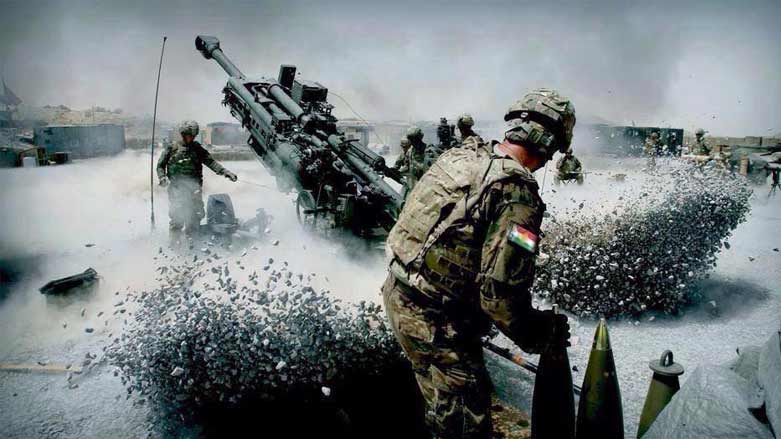Coalition extends anti-Da’esh Campaign

Foreign Ministers from 23 member-states of the U.S.-led coalition against Da’esh (IS) have just met in Rome to “intensify their efforts” against the brutal terrorist organization. This conference follows a meeting of the Defense Ministers of “core” coalition states at the end of January. After 18 months of desultory confrontation with Da’esh, the coalition now seems intent on increasing the pressure.
In addition to Da’esh’s presence in Iraq and Syria, coalition governments are most concerned about its expansion into Libya. Spring will bring milder weather, increasing the number of migrants crossing the Mediterranean to Europe, particularly Italy. The Italian island of Lampedusa lies less than 200 miles from the Libyan coast. If refugees can make it to Lampedusa, they have made it to Europe.
Da’esh now controls over 150 miles of Libyan coast. Illegal migration from Libya has long been a problem, but there is a new concern: Da’esh may sneak operatives into the flow of migrants to Europe. After all, two of the terrorists involved in the bloody attacks in Paris last November arrived as part of the influx of refugees.
Concern also exists that if Da’esh manages to establish a sufficiently robust presence in Libya, it could link up with other terrorist organizations in Africa: Boko Haram, operating in Nigeria; the several terrorist groups active in northern Mali; or al-Shabab in Somalia.
Da’esh’s Libyan branch centers around the city of Sirte, its North African headquarters, and home of Libya’s deposed strongman, Moammar Qaddafi, and his tribe, the Qadhadhfa. A year ago, the Carnegie Endowment suggested that Da’esh might “exploit the increasing resentment” of those who “have been excluded from the new order,” including the “Qadhadhfa tribe in the Sirte-Sabha region.”
Notably, one of Da’esh’s most senior leaders in Libya is a former Saddam-era Iraqi army officer, who arrived in Libya last year, as the New York Times reports. Another Iraqi-led Da’esh in Libya until he was killed in a U.S. airstrike last November. Iraqi officers from the Saddam era would have little trouble working with men linked to Libya’s former dictatorial regime.
Counterterrorism officials regard Da’esh’s Libyan branch as its “most dangerous affiliate.” But Libya still lacks a central government, a major obstacle for the coalition in fighting Da’esh there. In mid-December, Libya’s two main rival factions agreed to form a U.N.-brokered unity government. However, that agreement has yet to be implemented. The coalition is waiting for the formation of that government. However, Italy strongly opposes any delays. As Italy’s Defense Minister stated, "We cannot imagine the situation in Libya remaining in a stall as spring comes and goes.” U.S. and British Special Forces have been in Libya, gathering intelligence on extremist networks, as well as scouting possible local allies, but no decision has been made on how to proceed.
The increased effort against Da’esh is not limited to Libya. President Barack Obama has authorized the U.S. military to take offensive action against Da’esh in Afghanistan. And Secretary of Defense Ashton Carter signaled a more vigorous effort in Iraq and Syria, when he told CNBC last month, “We're looking for opportunities to do more, and there will be boots on the ground — I want to be clear about that.” Finally, the Pentagon will ask for a 35 percent increase in funding to fight Da’esh in next year’s budget.
With the U.S. newly strengthened in its resolve to combat Da’esh, hopefully, deficiencies in supplies for local allies will also be addressed. The Washington Post recently described some of the problems faced by the Peshmerga, who are on the front lines facing Da’esh: aging weapons; no heavy machine guns; no armored vehicles; inadequate communications equipment; even a lack of winter clothing. Given that the U.S. is counting on Peshmerga to play a decisive role in expelling Da’esh from Mosul, one would also expect that the U.S. would adequately supply and equip them.
However, even as the coalition campaign against Da’esh accelerates, some experts, including those at Foreign Policy, suggest that Da’esh’s expansion is outpacing those efforts. As the journal notes, Da’esh has declared “provinces” in eight other countries: Egypt, Yemen, Algeria, Saudi Arabia, Afghanistan, Pakistan, Nigeria, and Russia. It also suggests that Tunisia, Bangladesh, Indonesia and Somalia are at risk.
At the time of 9/11, Islamic extremists were limited in number and scope, and only one group was a real threat to America: al-Qaida. For the past fifteen years, we Americans have been fighting a war against such terrorists. If they are a greater danger now in at least some crucial respects—like the extent of territory they hold and the threat they pose to our European allies, whether through terrorism or the migrant crisis—we might ask: Could we be doing something wrong?
Laurie Ann Mylroie, Ph.D., taught at Harvard University and the U.S. Naval War College. Most recently, she served as a cultural advisor to the U.S. military in Afghanistan.
